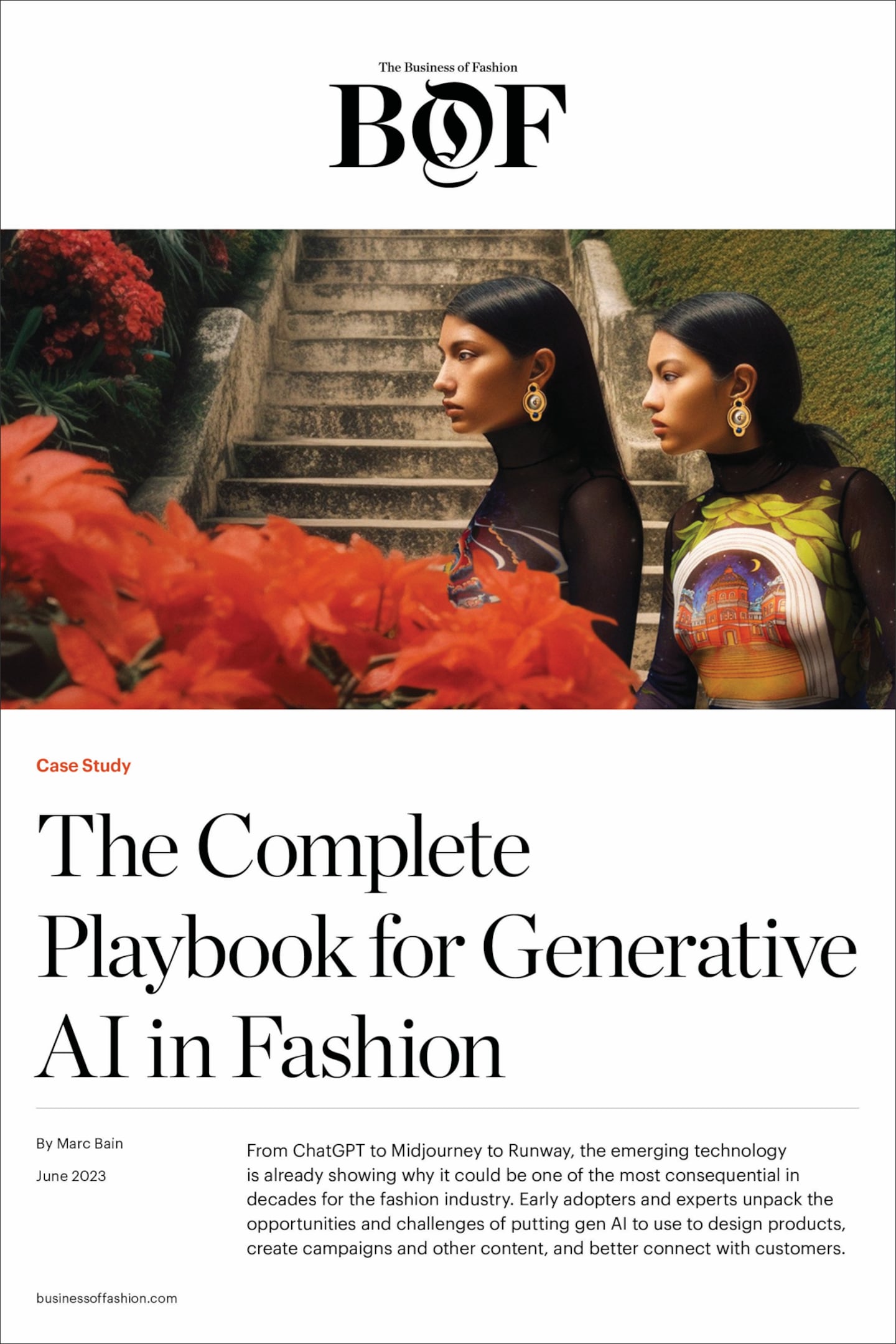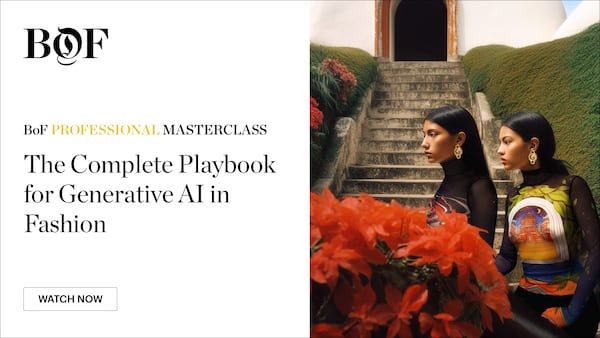
The Business of Fashion
Agenda-setting intelligence, analysis and advice for the global fashion community.

Agenda-setting intelligence, analysis and advice for the global fashion community.

In 2018, an artist named Robbie Barrat conceived an entire fashion collection in the style of Balenciaga using artificial intelligence. Barrat had to train his own AI model on images of existing looks he gathered himself, and the output wasn’t perfect. Much of it appeared smudged and distorted. But it was enough to capture fashion’s attention, landing him an interview with Ssense and a collaboration with Acne Studios.
Just a few years later, anyone with a computer can essentially create a collection — with less work and more photorealistic results than Barrat’s earlier attempt — using new generative-AI tools.
Generative AI, which describes machine learning algorithms capable of creating new content, is set to have a major impact on fashion brands. Trained on a sufficient number of examples, these algorithms recognise the underlying patterns and structures in data and create novel examples of their own. Some tools, such as DALL-E 2, Midjourney and Stable Diffusion, can produce images. Others, such as ChatGPT, can generate text. Still others are capable of making videos, like Runway. But all are able to create their content from text prompts, promising a wide array of uses.
Though generative AI grabbed attention with the deluge of user-generated memes it unleashed online, like a video reimagining the Harry Potter movies in the style of Balenciaga, its greatest impact could be on businesses. Tech giants such as Microsoft and Google are racing to incorporate it into their core products, while industries from healthcare to finance are looking for ways to use it to lift labour productivity and a wave of start-ups are building enterprise applications. Goldman Sachs analysts estimate that, once generative AI is widely adopted, it could boost US productivity by 1.5 percentage points per year for a decade, ultimately increasing S&P 500 profits 30 percent or more over that period.
ADVERTISEMENT
Fashion is set to experience generative AI-influenced growth of its own. While the industry is just starting to explore the technology’s potential, McKinsey & Company estimates that in the next three to five years it could add between $150 billion and $275 billion to the operating profits of the apparel, fashion and luxury sectors. It is already beginning to shake up areas such as design, marketing and customer service.
As various parts of the fashion industry value chain test and adopt the technology, this case study explores the opportunities, challenges and risks for both brands and their employees. However, the field is changing rapidly and use cases were a work in progress as we conducted our research and interviews in spring 2023. That said, four key strategic areas have already emerged for fashion, enabling this case study to showcase the state of play in product design, visual content creation, copywriting, and shopping and customer experience. To help build out the knowledge provided in this case study, brands and retailers such as Revolve, Casablanca Paris, Frame, Snipes, Levi’s and Zalando; technology providers such as Salesforce, Amazon and Shopify; and other AI-focused experts share real examples of putting this emerging technology to use and what they have been learning in the process.
Artificial intelligence (AI): Technology such as a computer program that mimics the human brain’s ability to perform tasks and learn and improve over time.
Deep learning: A form of neural network involving more than three node layers. These algorithms are more effective at processing and understanding unstructured data.
Diffusion model: A type of generative model trained by adding “noise” to a set of training data and then reversing the process to reconstruct the data. It can use random noise to create new data by repeating the “denoising” process.
Generative Adversarial Network (GAN): A type of generative model capable of producing realistic imagery by employing two neural networks, a generator and a discriminator. The generator creates new content and the discriminator tries to distinguish if it’s real or fake. As each improves, the output becomes increasingly more difficult to identify as false.
Generative AI: Deep learning algorithms that with sufficient examples of something can recognise the underlying patterns and structures in the data and produce new iterations, including text, imagery, video and more.
Machine learning (ML): A branch of AI that involves algorithms which are able to identify patterns in data and learn from them without being explicitly programmed.
ADVERTISEMENT
Neural network: A form of ML that uses a set of interconnected algorithms structured in various node layers imitating the workings of the human brain.
Transformer: A neural network that uses sequences of data, like words in a sentence, to identify relationships between data points that may be far apart from one another, allowing it to understand context and predict new sequences. Many language models like OpenAI’s GPT models (GPT stands for “generative pre-trained transformer”) are transformers trained on giant amounts of data.

Watch on demand a special Masterclass, as BoF’s technology correspondent Marc Bain, along with a panel of experts, unpacked our case study on generative AI.

Marc Bain is Technology Correspondent at The Business of Fashion. He is based in New York and drives BoF’s coverage of technology and innovation, from start-ups to Big Tech.
The algorithms TikTok relies on for its operations are deemed core to ByteDance overall operations, which would make a sale of the app with algorithms highly unlikely.
The app, owned by TikTok parent company ByteDance, has been promising to help emerging US labels get started selling in China at the same time that TikTok stares down a ban by the US for its ties to China.
Zero10 offers digital solutions through AR mirrors, leveraged in-store and in window displays, to brands like Tommy Hilfiger and Coach. Co-founder and CEO George Yashin discusses the latest advancements in AR and how fashion companies can leverage the technology to boost consumer experiences via retail touchpoints and brand experiences.
Four years ago, when the Trump administration threatened to ban TikTok in the US, its Chinese parent company ByteDance Ltd. worked out a preliminary deal to sell the short video app’s business. Not this time.